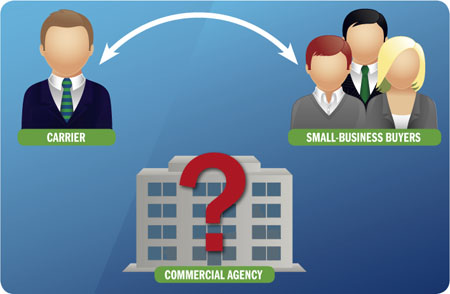 In personal-lines insurance, particularly in the highly commoditized world of Personal Auto, carriers offering direct-to-consumer sales via the Web have achieved what the Independent Insurance Agents & Brokers of America (IIABA) characterizes as “unmistakable” success.
In personal-lines insurance, particularly in the highly commoditized world of Personal Auto, carriers offering direct-to-consumer sales via the Web have achieved what the Independent Insurance Agents & Brokers of America (IIABA) characterizes as “unmistakable” success.
In its latest Property-Casualty Insurance Market report, the IIABA found that 1 in every 6 dollars in Personal Auto premiums comes through the direct-response channel.
But while producers are clearly feeling the competitive pinch in personal lines, for the most part they aren't concerned with encroachment into their territory by companies offering direct online sales of commercial insurance—at least not yet.
Recommended For You
Want to continue reading?
Become a Free PropertyCasualty360 Digital Reader
Your access to unlimited PropertyCasualty360 content isn’t changing.
Once you are an ALM digital member, you’ll receive:
- Breaking insurance news and analysis, on-site and via our newsletters and custom alerts
- Weekly Insurance Speak podcast featuring exclusive interviews with industry leaders
- Educational webcasts, white papers, and ebooks from industry thought leaders
- Critical converage of the employee benefits and financial advisory markets on our other ALM sites, BenefitsPRO and ThinkAdvisor
Already have an account? Sign In Now
© 2025 ALM Global, LLC, All Rights Reserved. Request academic re-use from www.copyright.com. All other uses, submit a request to [email protected]. For more information visit Asset & Logo Licensing.








